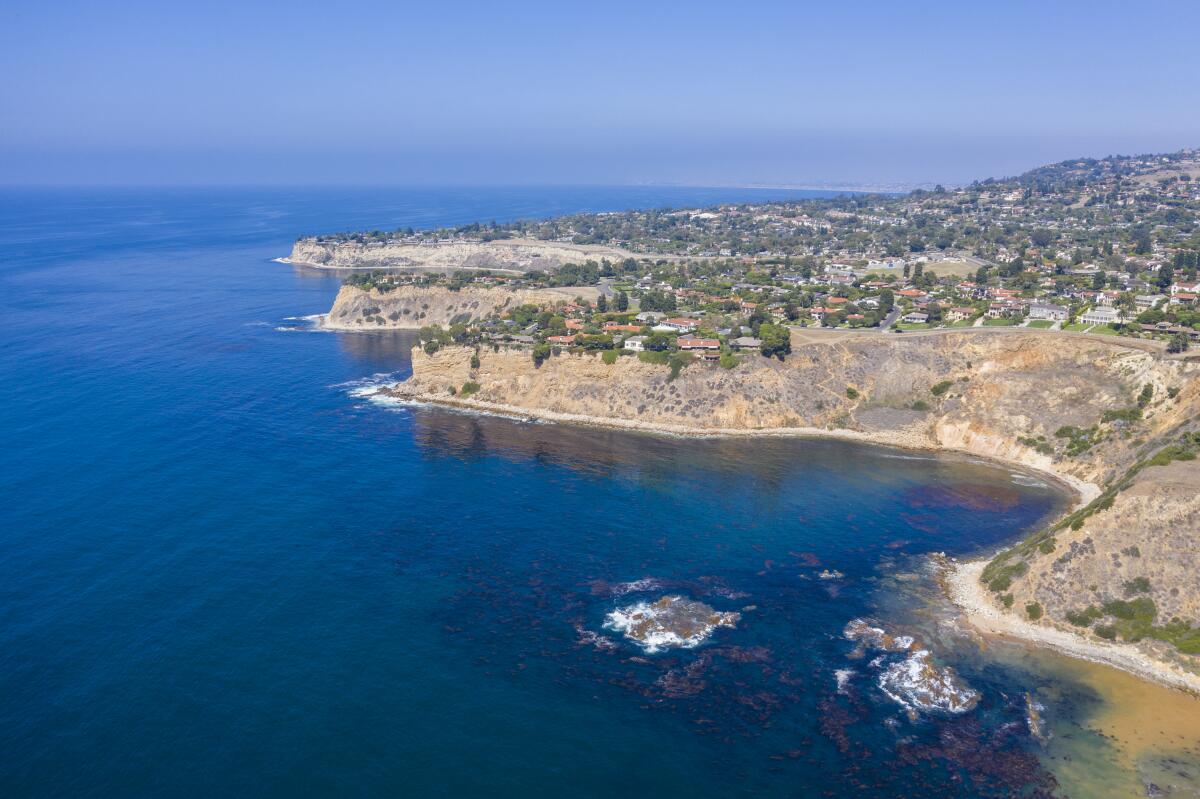
The 8 best easy Southern California hikes with great ocean views
- Share via
Southern California beach walks are nice, but sometimes you want something more than sand squishing between your toes. Lace up your hiking boots and try these eight trails that are easy enough for the whole family and showcase some of the best ocean views around. The thing they have in common: vistas from a bluff, lookout or high point that allow you to savor the rocky contours of Southern California’s signature landscape. These just aren’t views you get from the beach.
Many of these trails are part of the California Coastal Trail, a planned route for walking or biking 1,230 miles of coast from Oregon to Mexico. It’s about 70% completed (this map shows how the trail is progressing.) Until the route is complete, use our picks to create a sampler of hikes from La Jolla to Ventura.
Want more ideas on where to hike? Check out the 50 Best Hikes in L.A. and the L.A. Times 2021 Hiking Guide.
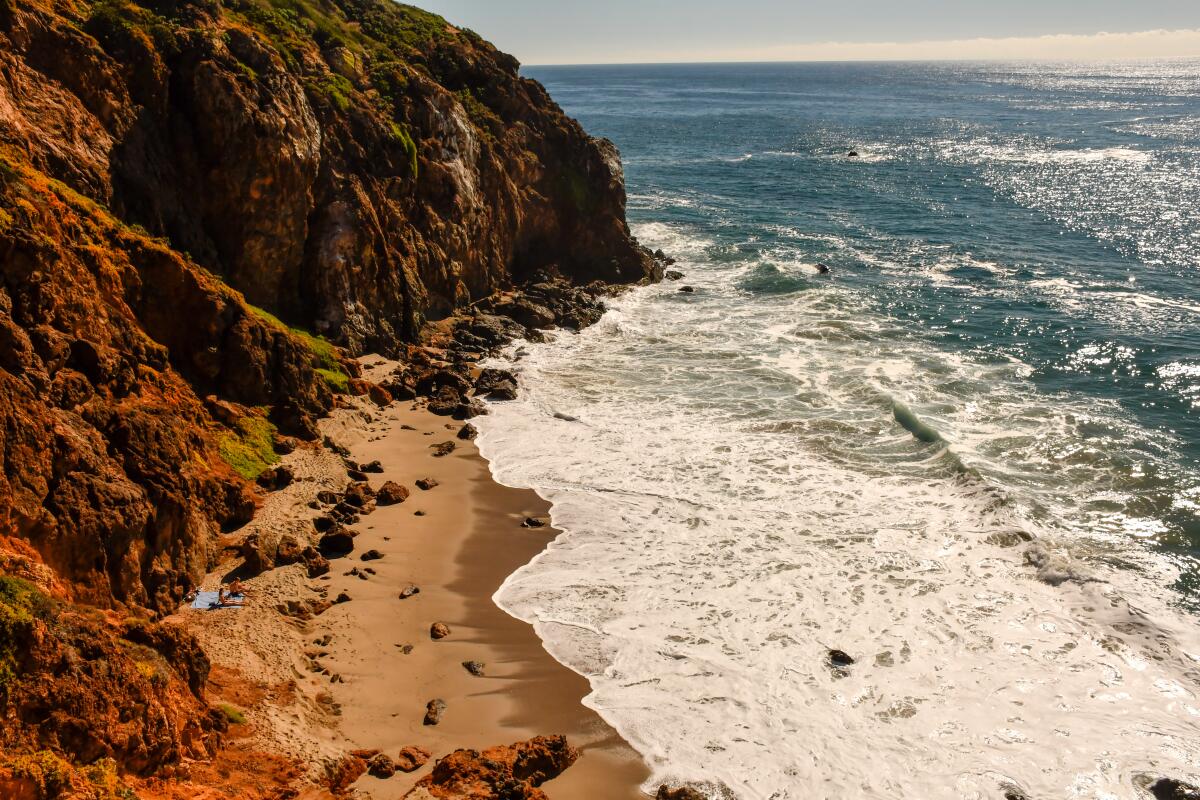
Point Dume Cove Trail
I showed up on a brisk day ideal for a beach walk, and there were dozens of us on the paths. I can picture some nasty foot traffic in the hour before sunset, but I can’t imagine a better place to stand and scan the sea for gray whales, which are common from February through April.
You get a wide view of Santa Monica Bay from the point’s high ground or the 200-yard boardwalk near the top of the hill. As a plaque notes, Point Dume got its name from English explorer George Vancouver, who sailed by in 1793 and attempted to name it for Francisco Dumetz, a Franciscan priest at the Ventura mission, and apparently left out the “tz.”
Northwest of the high point, follow the main trail to a rocky promontory that looks down on Pirate’s Cove Beach and a jumble of black rocks and tide pools. To your right, the broad, sandy expanse of Point Dume State Beach reaches northwest and blends into Zuma Beach.
I covered the network of paths at the point in about 90 minutes (with plenty of time for photography). You can add more steps by strolling north up the beach toward Zuma and doubling back . It’s all flat sand.
Tip: To start at the beach, take Malibu’s Westward Beach Road to Birdview Avenue, then park at Point Dume State Beach. To start atop the bluffs, head for the 29200 block of West Cliffside Drive where there are 10 two-hour parking spots. If they’re full, continue to Grasswood Avenue, turn left and look for street parking once it’s legal.
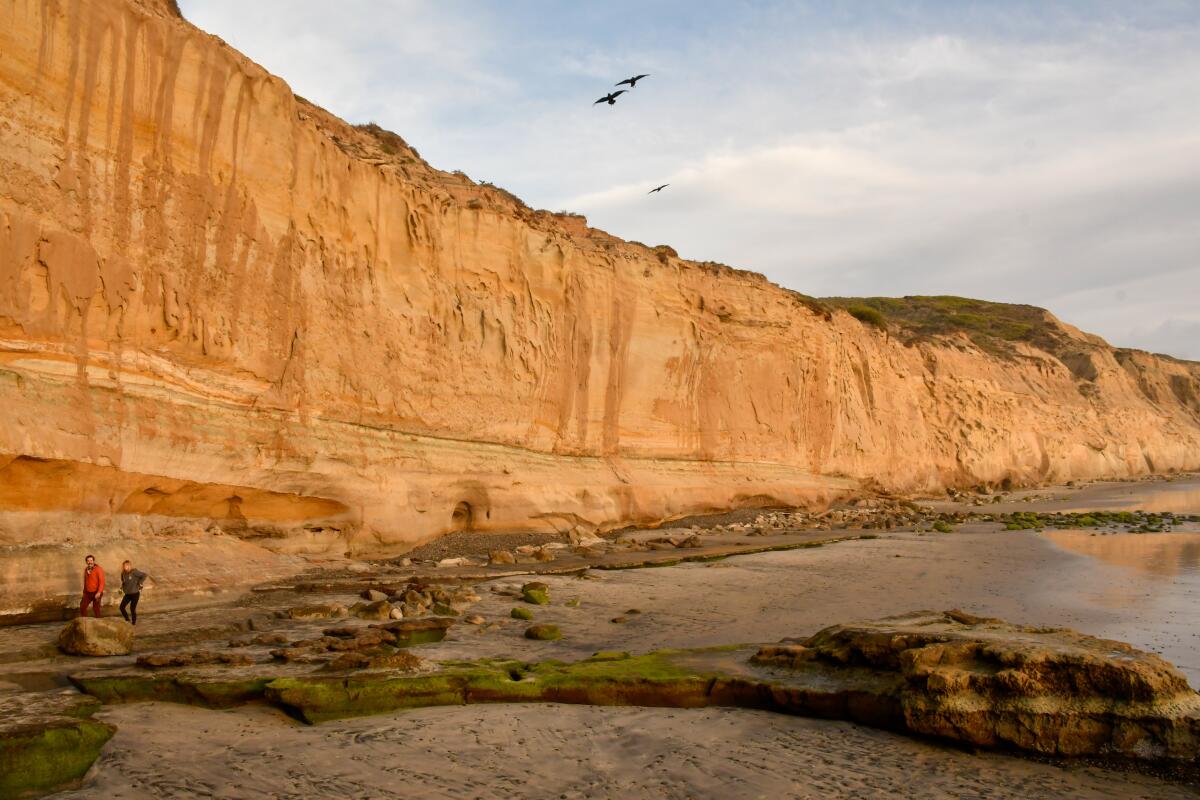
Beach Trail and Broken Hill Trail
The trails at the 2,000-acre Torrey Pines State Natural Reserve cover crumbling cliffs and a long beach, best enjoyed at low tide. But these sandstone cliffs are taller and the trails are mostly on top of those cliffs, offering commanding views. Whenever you go, from 7 a.m. to sunset, there will be plenty of people. It’s a great family spot, though it includes the challenge of more than 100 sandy stairsteps between beach and clifftop.
I followed the Beach Trail (¾ mile) and took detours to Red Butte and Yucca Point Overlook (½ mile). The trails, some bordered by cables, cut through coastal sage scrub. From the high points, the fragility of the ravines is clear. From below, so is the power of the sea.
After meandering on the beach and sampling the tide pools, I took the Beach Trail back up top, then avoided crowds by taking the reserve’s longest trail, the Broken Hill Trail’s north fork (1.2 miles) along the clifftop and through the chaparral and sagebrush with a half-mile walk from the trailhead to my car.
One drawback to this route: You won’t get close to any Torrey pines, which are North America’s rarest pine tree species. For that, take the Guy Fleming Trail to the North Overlook. (Remember, if you hiked all six of the reserve’s trails, it would be less than 10 miles.)
Bottom line: The whole thing is spectacular. When I close my eyes and imagine my favorite Southern California scenery, this place pops up.
Tip: On entering the reserve (12600 N. Torrey Pines Road, La Jolla), pay the $12-$25 day-use fee (demand-based pricing). Then choose option 1: Park near the beach in the South Beach Lot (which fills first) or the North Beach Lot, then hike up the road to the clifftop and down to the shore again. Or option 2: Drive to the Upper Lots atop the cliffs, park at the trailhead and hike down to the beach and back up again. I chose option 1 to be up high for sunset and avoid walking next to vehicular traffic.
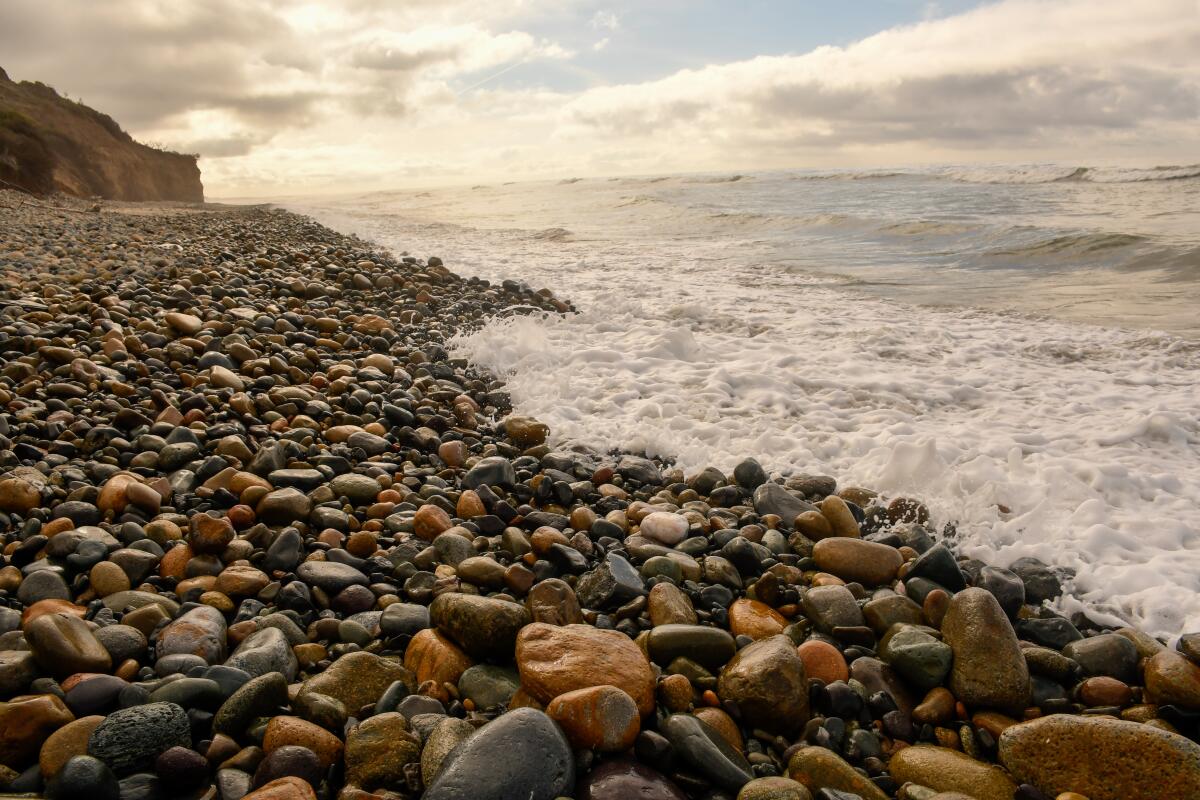
Bluffs Beach Trail
I headed up the coast (northeast), toward the twin domes of the idle San Onofre nuclear generating plant. Most of this route is a walk on the beach, but that doesn’t mean it’s easy.
If you arrive at or near high tide (as I did; bad planning), much of the sand will be underwater. You’ll need to trudge on well-tumbled stones, some the size of ping-pong balls, some the size of watermelons. They are fascinating to look at (many are eerily round) but taxing to walk on. When the tide retreats over those stones, it makes a great rattle.
It’s just shy of 2 miles from Trail 3 to the Cristianitos Fault, a dramatic example of this region’s geologic instability. You’ll know when you’ve arrived: Along the cliff face above , the spot is marked by the beginning of a big blond band of rock — a layer so abrupt and even that at first I thought it had been put up by Southern California Edison. (The twin domes are less than a mile up the coast.)
On the way back, I took the fairly steep Trail 2 to the top of the bluffs, paused a minute to pant, then followed a dull blufftop path back to my car. I saw five surfers, three hikers, a handful of cyclists and a handful of rangers in their cars. Three calming hours. Next time, I’ll be tempted to explore the territory southeast of Trail 3.
If you try this hike, thank the Marines. The 3,000 acres of San Onofre State Beach are owned by the Marine Corps (along with the rest of Camp Pendleton) and leased to the state of California. The lease expires Aug. 31, but the Marines have tentatively agreed to an extension of at least three years.
Tip: Once you drive into the park (5200 S. Pacific Coast Highway, San Clemente) and pay your $15 day-use fee (open 6 a.m. to sunset), follow an access road that parallels the coast, lined by parking spaces and trailheads, numbered 1-6 from north to south. Start at Trailhead 3 (which is better marked than some others).
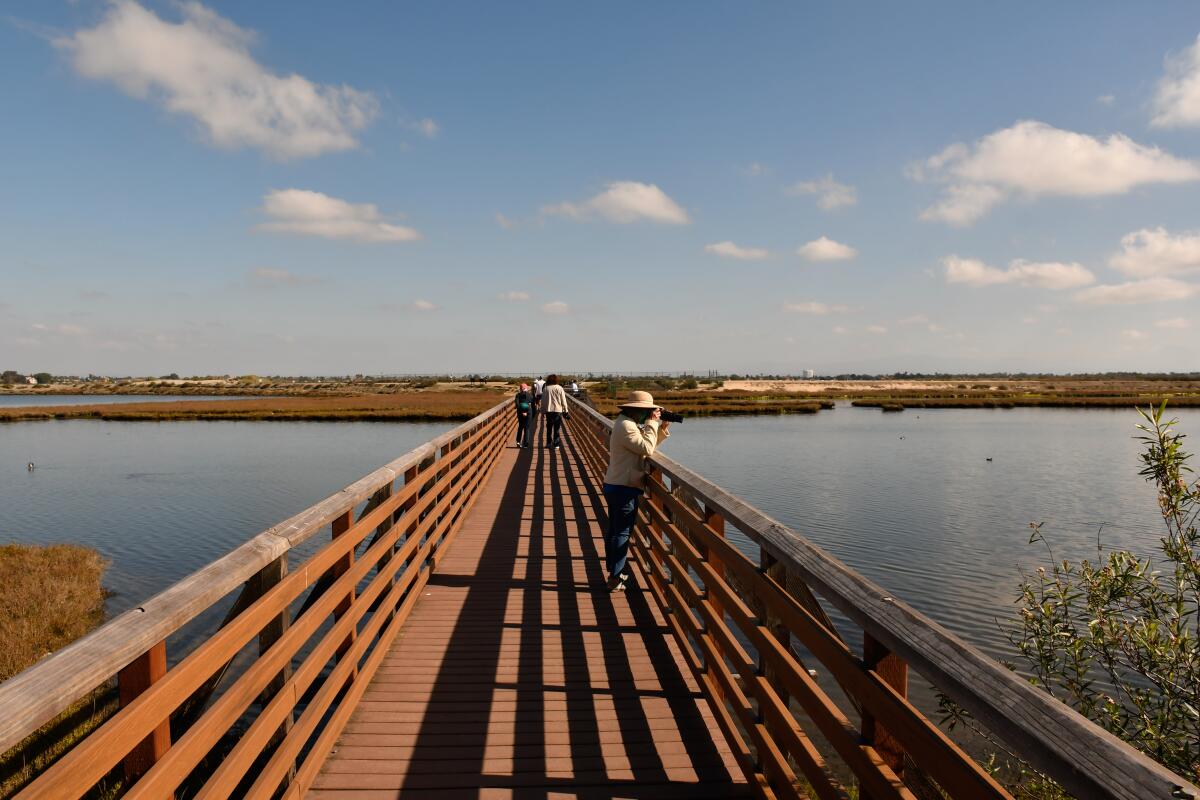
Mesa Trail to Pocket Loop Trail
If you’re not big on birds and you’re walking in not-so-dramatic light, this area may prove a bit dull (the scenery doesn’t change much) and loud (cars roar past on Pacific Coast Highway).
I shared some pleasant moments with a great egret and I liked the boardwalk over the water and the inland portion of the Bolsa Pocket Loop, probably because there were a few tall trees and I was farther from PCH. Trails are a mix of dirt, blacktop and boardwalk.
Tip: There are two small parking areas (each free, with portable toilets). If you park at 3842 Warner Ave. in Huntington Beach, start with the Mesa Trail, which segues to the Pocket Loop Trail, the wide path atop the flood control channel and Inner Bay Loop Trail. If you park in the lot accessible from the northbound Pacific Coast Highway, you’ll do that backward, beginning with the Inner Bay Loop.
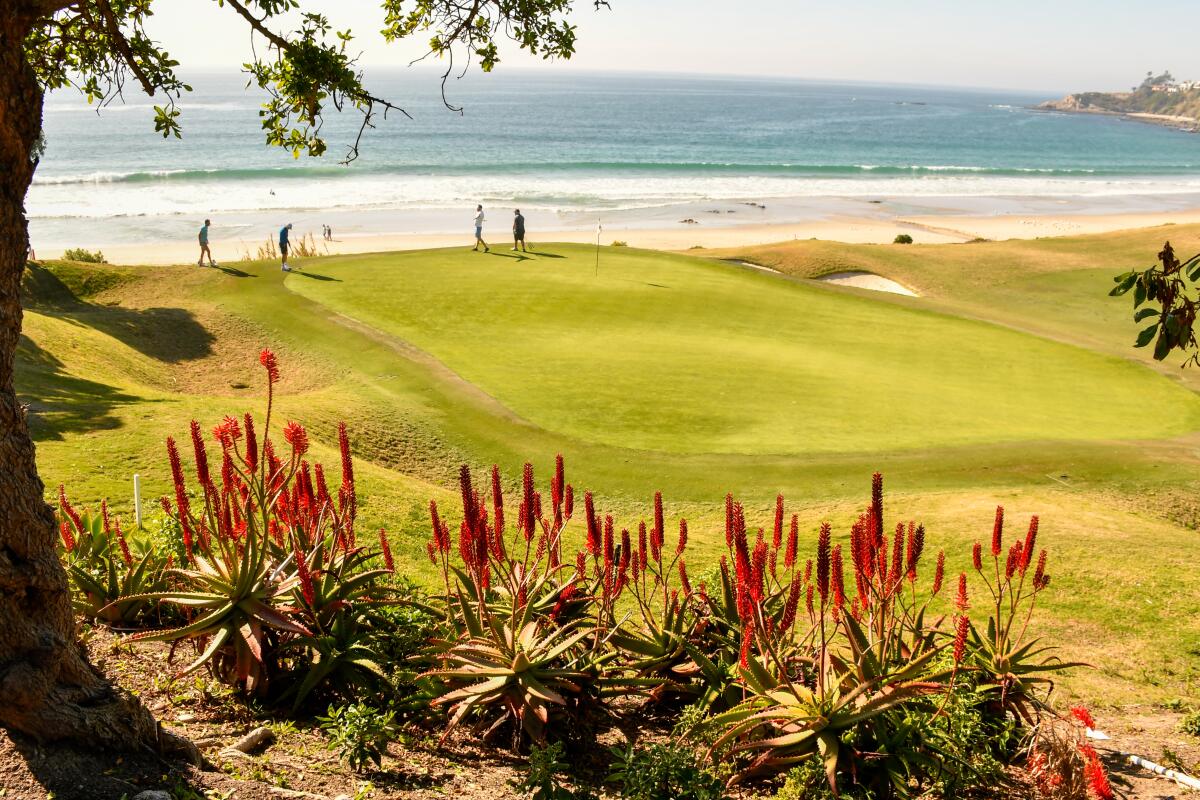
Salt Creek Trail
The route in Dana Point and Laguna Niguel begins with a gentle descent and leads through a classic Southern California landscape of chaparral and rolling hills, passing through three tunnels under busy streets (Niguel Road, Camino del Avion and Pacific Coast Highway).
The trickiest bit came after the tunnel under Niguel Road when a hiker/walker faces three choices. You want the least obvious one — the uphill path to the far right, nearest to Fratello’s restaurant.
Near the trail’s western end, it skirts the Monarch Beach Golf Links and ends at Salt Creek Beach Park north of the Ritz-Carlton Laguna Niguel. I happened to arrive just as the morning fog was lifting and a handful of guys were getting ready to take a pair of goats surfing.
In other words, just another beach weekend, right?
Tip: Start at the inland end of this route at Chapparosa Community Park in Laguna Niguel where parking is free. The trailhead is next to the park’s baseball fields.
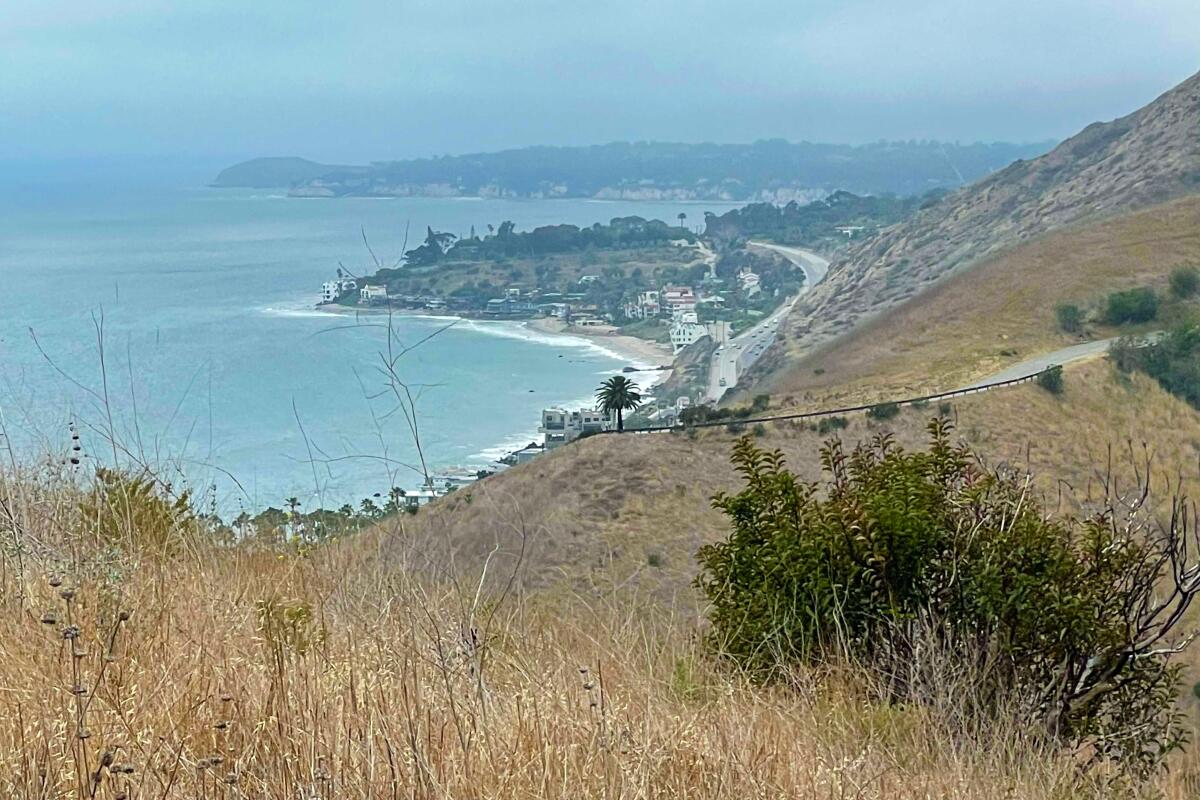
Sara Wan Trail
The Sara Wan Trail starts along a dusty path that leads down to a creek then quickly turns left at the first intersection and begins to climb. You’ll find good inland views of the rolling mountains, some topped with exquisite homes, and trees in the canyon below that bear charred signs of the 2018 Woolsey fire. It may feel as if there are more than 600 feet of gain but stick with the trail, which snakes back toward the ocean after the first mile. At the last turn, the views show the crescent curve of the coastline below and, in the distance, Point Dume.
Ocean views stay with you during the descent that completes the loop. You’re never out of earshot of the traffic hum, but it doesn’t diminish the payoff views at the top. The trail is named for the late activist and former California Coastal Commission chair who worked to maintain public access to SoCal’s precious coastline.
Start at Corral Canyon Park (25653 Pacific Coast Highway, Malibu). It’s an easy turn off the highway into a small parking lot ($12) or park on PCH. If you want to reward yourself, Malibu Seafood patio cafe is next door. Need more dining options? Check out our picks for the right sandwich for 22 hikes in L.A.

Seascape Trail and Golden Cove Trail
The wide trail starts at the Point Vicente Interpretive Center, a small museum and gift shop with a large deck. From December through late May, whale watchers gather daily to record the number of migrating gray whales that pass the peninsula. From the deck, the path is clearly marked as it heads up the coast and intersects with the Golden Cove Trail. Continue to the Calle Entradero vista point (you’ll know it when you see it), then turn around and retrace your steps.
This is also a place to linger. Bring a feast and kick back at one of the picnic tables with the five-star ocean views. Take a look at the nearby Point Vicente Lighthouse, which in 1926 was “the brightest beach in Southern California,” the website says. It typically opens for visitors one day a month. Parking is free.
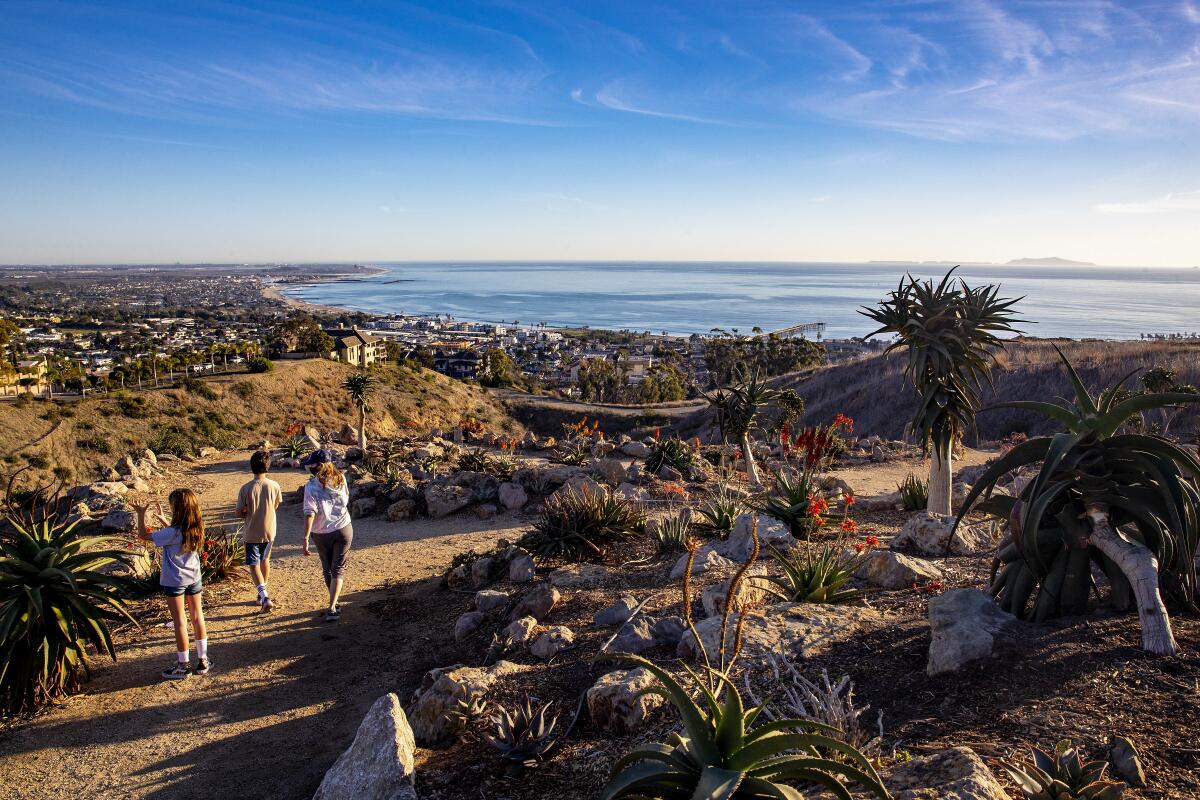
Take in the natural beauty of Ventura Botanical Gardens
It’s hard to imagine a bad time to visit the gardens, but try to choose a day with billowy clouds and the sun drifting in and out. These terraced gardens are focused on the flora of the world’s five Mediterranean climates, in Southern California, Australia, Chile, South Africa and, of course, the Mediterranean, but the walks are as much about the heart-soaring vistas of surf and sky as they are about the plants beside your feet.
Most of the walkways are meandering switchbacks of earth and rock, and it’s a good two miles from the welcome center to the top gardens. You can make a loop on the return too. The walks are uphill, but the incline is so gradual and the view so distracting that you hardly notice you’re slightly out of breath. The first half-mile or so is packed hard for wheelchair access, but the rest of the paths can be challenging for wheels; nonetheless, I’ve seen more than one adult pushing all-terrain strollers along the paths.
These are young gardens, mostly replanted since mid-2018 after the Thomas fire in 2017 and 2018. Leashed dogs are welcome on Wednesdays, Fridays and monthly free days. There is ample free parking in the garden’s lot behind Ventura’s City Hall. Admission is $7, except on Fridays, when entry is free. Ages 18 and younger are free.
Sign up for The Wild
We’ll help you find the best places to hike, bike and run, as well as the perfect silent spots for meditation and yoga.
You may occasionally receive promotional content from the Los Angeles Times.



